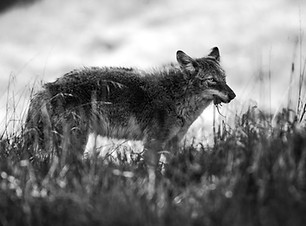
Research

Coyote Diet
Based on previous literature we have a good idea of what our Seattle urban coyotes might be eating. Their diets will likely consist of a large amount of rodents, rabbits, and some anthropogenically sourced foods. Occasionally, coyotes may also consume domestic animals such as cats, small dogs, and chickens. Part of this project aims to understand how often and where coyotes are consuming more domestic animals, so that outreach can be done to help prevent such incidents.
To learn more about our research on coyote diet click here.

Human-Coyote Conflict
In collaboration with Woodland Park Zoo, we aim to understand how, where, and why coyotes come into conflict with humans. Using the data we collect, we hope to be able to predict areas of high conflict potential and target these locations for outreach so that conflicts can minimized.

Benefits of Urban Coyotes
While the media and literature has predominately focused on the negatives of living with urban carnivores, there are likely significant and tangible benefits to living with urban coyotes as well. Based on previous coyote diet literature, Seattle's urban coyotes are likely feeding on mainly invasive species and species that may have negative impacts on urban human populations. For instance, a large portion of urban coyote diets tends to be rodents. These rodents have considerable negative impacts on humans such as infrastructure destruction and disease transmission. Thus, through predation, coyotes have positive impact for humans, by removing disease vectors and other damaging, and often invasive, species from the environment.
To learn more about our research on the benefits of urban coyotes click here.

Coyote Demographics
We will extract genetic information from each individual scat in order to identify individual coyotes. This will allow us to form a rough estimate of the number of coyotes in Seattle, as well as give us some important information on coyote demographics such as sex and relative genetic diversity.

Methods
We will be using entirely non-invasive methods to understand Seattle urban coyotes. This means we don't have to handle or disturb the animals at all to learn about them. We rely on non-invasive methods such as camera traps and extracting genetic information from scat to learn what coyotes eat in Seattle.
We will be using cutting-edge technology like next-generation sequencing and metabarcoding to extract dietary information from coyote scats. To do this we first collect scats from around the city. We then extract DNA that gives us information about the individual coyote that deposited the scat and the DNA from all of the things it consumed (plants, animals, and insects!). We then send this information to a next-generation sequencing machine, where it reads the DNA and can tell us what organisms were present inside the coyote scat (i.e., what it ate!).